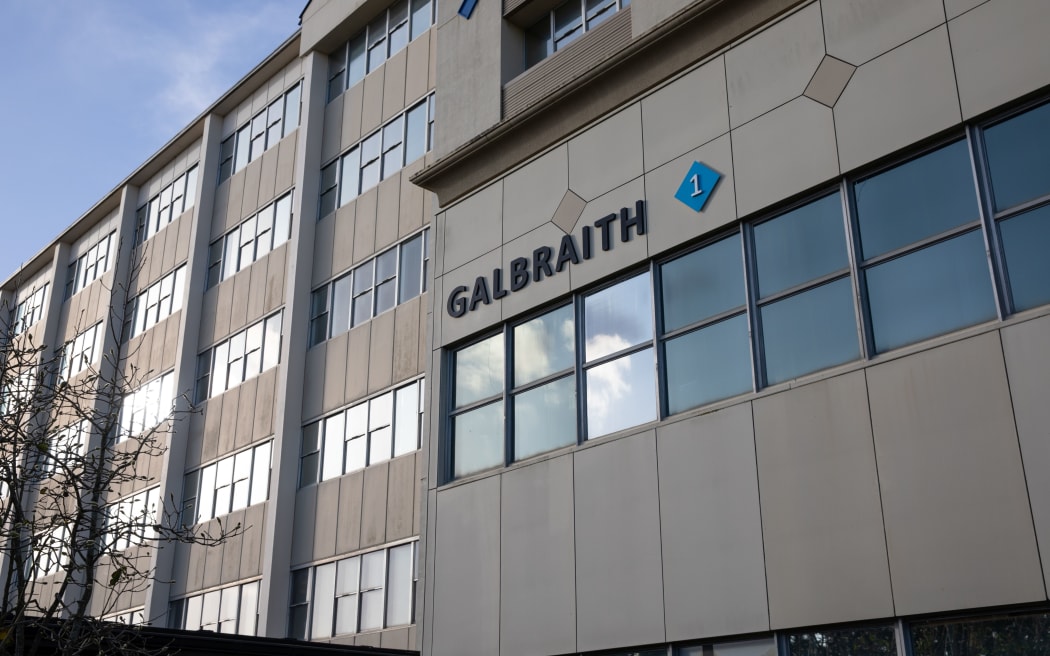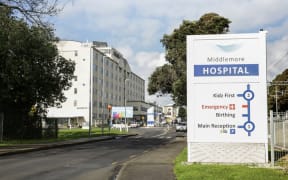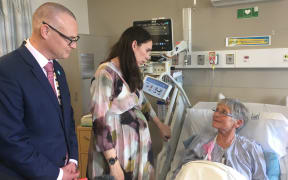Engineers have told Middlemore Hospital it will cost more than $70 million to get its maternity ward building to a point it's not earthquake prone.

The Galbraith building at Middlemore Hospital. Photo: RNZ
Counties-Manukau District Health Board is debating what to do with the 50-year-old five-storey Galbraith building.
It houses a birthing unit, two maternity wards, early pregnancy assessment clinic, gynaecology care unit, ophthalmology clinics, plastic surgery, clinical engineering, infusion centre, blood bank, radiology and executive offices.
A new seismic assessment rates it at just 20 percent of the New Building Standard (NBS) - when compared with a new building with the same use, on the same site.
Anything under 34 percent is quake-prone, the riskiest category of building.
Counties-Manukau District Health Board's Galbraith Assessment Update:
Assessments by two engineering firms Beca and Holmes show that bringing it up to the minimum building standard - 35 percent of the NBS - would take up to three years of strengthening work and cost more than $74m.
On top of that could be costs associated with fixing or relocating critical building services infrastructure such as power, medical gas and data, currently estimated at $19m just for structural items.
"We expect significant cost estimate increases," the board's latest update said.
It is not clear what it would cost to get it to above 67 percent, the standard required for hospitals to be able to treat people after a disaster.
Beca said in its report that three stairwells were "very likely to be susceptible to early onset damage" in a big quake.
A high-rise link to the next-door Bray building was not strong. In a quake it could "bounce" between the floors of Galbraith building and Bray building, Beca said.
The building's plant room on the roof is one of the weaker parts of Galbraith, and if damaged could disrupt services to the Acute Hub building next door.
"Staff, patient and visitor safety is obviously a priority for the board," new board chair Mark Gosche said in a statement.
"Strengthening work would involve major relocation for clinical services located on levels two to five, notably the two-year relocation for Maternity wards, and Assessment Labour and Birthing Unit," Mr Gosche said.
Even doing the minimum amount of strengthening would leave Middlemore with "insufficient maternity services capacity" for two years.
The "practical realities and potential clinical risks" of shifting out the maternity service were now being looked at, the board said.
The board is asking for more advice on two options: Whether to leave the building as-is, or strengthen just the exits, while it decides what to do long term.
Auckland was in a low-risk quake zone, Mr Gosche said.
That means for normal commercial buildings, owners have 35 years to fix them.
However, Galbraith does not get that leeway as it is supposed to be able to withstand a strong quake and commence operations straight afterwards.
Counties-Manukau DHB has three other buildings with confirmed seismic issues, and three suspected to have such issues. All seven, including Galbraith, are considered part of its critical infrastructure.




